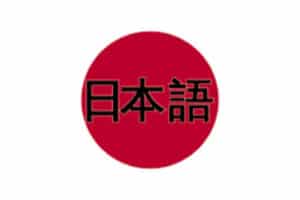Learn Japanese and delve into a rich tapestry woven with threads from various linguistic traditions. At Sakuraa Nihongo Resource Centre, we provide students with a plethora of events and opportunities to experience Japanese culture firsthand.
Japanese is a fascinating language with a unique script and linguistic roots. Over the centuries, it has absorbed linguistic elements from China, Korea, and later, the Western world.
Chinese characters, known as Kanji in Japanese, play a pivotal role in the language. These characters, ideograms representing concepts rather than sounds, were introduced to Japan from China around the 5th century. While many Kanji have similar meanings in both languages, they are pronounced differently in Japanese. Japanese has borrowed numerous words from the Chinese language, particularly during the introduction of Buddhism and the adoption of Chinese writing characters. Words like 本 (hon, book), 食事 (shokuji, meal), and 経済 (keizai, economy) have Chinese origins.
The Portuguese were among the first Europeans to arrive in Japan in the 16th century. Their influence left behind words like “pan” (bread – パン) and “tempura”(てんぷら) a culinary technique inspired by the Portuguese deep-frying method. The Dutch, who had trading posts in Japan during the Edo period, introduced words such as “gasu” (gas–ガス) and “appuru” (apple–アップル).
These days, English has played a significant role in shaping Japanese vocabulary. With globalization and the rise of technology, countless loanwords, known as “gairaigo,” (外来語–がいらいご)have found their way into daily conversation. Words like “konpyuuta” (computer―コンピュータ) and “intaanetto, ” (internet―インターネット) have seamlessly integrated into Japanese language.
While learning Japanese, Sakuraa Nihongo Resource Centre’s teachers often incorporate such fascinating facts while teaching the language. Here are more interesting facts.
- Japanese people often adopt foreign words, adapting them to fit the phonetic structure of the Japanese language. This linguistic assimilation showcases Japan’s openness to external influences while maintaining its linguistic identity.
- Furthermore, cultural exchanges have led to the introduction of words related to customs and traditions. For instance, the Japanese New Year’s Eve celebration is referred to as “大晦日” (Ōmisoka), where “大” (Ō) means big or grand, borrowed from Chinese, and “晦日” (misoka) from Japanese.
The Japanese language reflects a rich tapestry woven with threads from various linguistic traditions. The dynamic interplay between indigenous and foreign words not only illustrates the adaptability of the language but also mirrors Japan’s historical encounters with different cultures.
At Sakuraa Nihongo Resource Centre, we provide students with a plethora of events and opportunities to experience Japanese culture firsthand. Come learn the Japanese culture, interact with Japanese only at SNRC!
Here are more examples of foreign origin words:
- コーヒー (kōhī): Coffee (Dutch, via Portuguese)
- レストラン (resutoran): Restaurant (French)
- パン (pan): Bread (Portuguese)
- バナナ (banana): Banana (Portuguese)
- ピザ (piza): Pizza (Italian)
- タオル (taoru): Towel (from Chinese “táojīn”
- シャンプー (shanpū): Shampoo (from Chinese “xiāngpào”)
- ヴォーダカ (vōdaka): Vodka (Russian distilled spirit)


